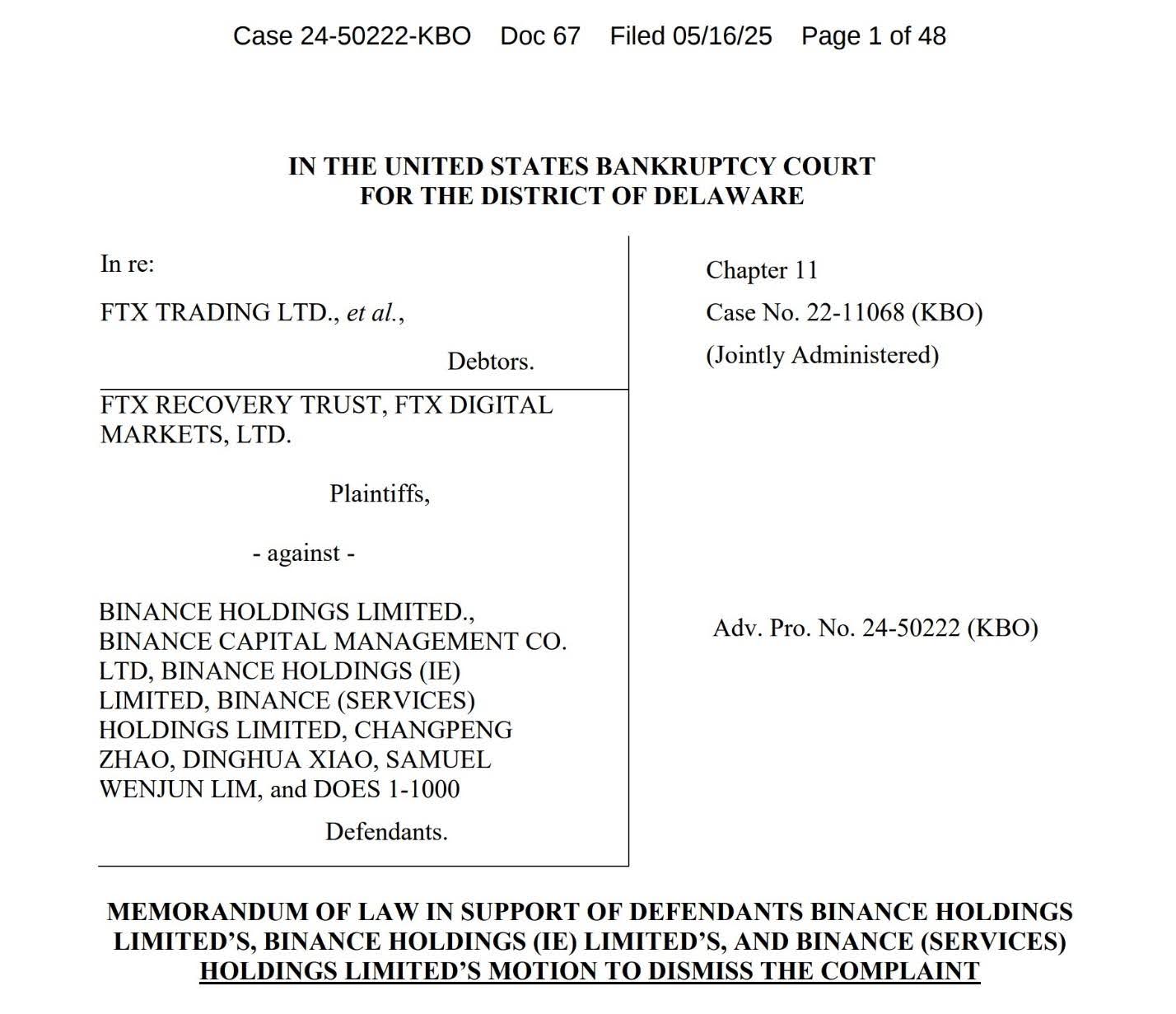Key Takeaways: What’s Happening Between Binance and FTX?
- Binance has moved to dismiss FTX’s $1.76 billion lawsuit, describing it as “legally deficient” and attributing FTX’s collapse to internal fraud.
- The lawsuit revolves around a 2021 buyback deal, with FTX claiming that customer funds were mismanaged.
- Binance defends a tweet from CEO Changpeng Zhao (CZ) as a reaction to public reports, rather than an act of market manipulation.
Binance has recently responded to a substantial lawsuit filed by the FTX estate, which seeks an impressive $1.76 billion. The cryptocurrency exchange filed a motion to dismiss the case, arguing that the claims made by FTX are not only baseless but are also an attempt to rewrite the narrative surrounding FTX’s catastrophic downfall, which Binance attributes to massive internal fraud orchestrated by Sam Bankman-Fried.
FTX’s Buyback Allegations: The Heart of the Lawsuit
Back in 2021, FTX executed a buyback deal, repurchasing a 20% stake previously sold to Binance for $1.76 billion. This transaction was made through a combination of cryptocurrencies, including BNB, BUSD, and FTT. The FTX estate has now alleged that this buyback was improperly financed using customer assets while the exchange was already in a state of insolvency.
In response, Binance’s legal team has vigorously rebutted these claims. They argue that FTX continued to operate seamlessly for a staggering 16 months following the buyback deal, undermining the assertion that it was on the brink of collapse. Binance maintains that the transaction was executed transparently and did not raise any red flags at the time. “Plaintiffs are pretending that FTX did not collapse as the result of one of the most massive corporate frauds in history,” Binance emphasized, alluding to Bankman-Fried’s convictions on multiple counts of fraud.

CZ’s Tweet: A Catalyst or Just a Reaction?
A significant aspect of the lawsuit revolves around a tweet from then-Binance CEO Changpeng Zhao (CZ) on November 6, 2022. FTX claims that this tweet, which announced Binance’s intention to liquidate its FTT holdings, sparked panic withdrawals and ultimately led to the exchange’s collapse.
Binance counters that framing this tweet as a cause of FTX’s downfall is misleading. The exchange argues that the tweet was issued in response to a public report detailing alarming aspects of Alameda Research’s financial situation, indicating that much of their assets were illiquid FTT tokens. Therefore, Binance claims that their actions were taken to manage risk rather than to manipulate the market. Their filing asserts, “The complaint contains no facts to suggest that the tweets were false,” reinforcing that CZ’s public statements were simply responsible risk management.
Moreover, Binance points out that it had received approximately $2.1 billion in FTT and BUSD during its exit from FTX, indicating a vested interest in managing their holdings responsibly to avoid disturbing the market.
Legal Jurisdiction Under Scrutiny
Delving into the legal dimensions of the case, Binance’s defense also questions the jurisdiction of the court. The exchange posits that none of the entities named in the lawsuit are based in the United States or conducted business from within the country. This argument leans on established safe-harbor protections, casting doubt on the FTX estate’s attempt to invoke U.S. state laws in a bankruptcy context.
Binance has referred to the complaint as “a grab bag of speculative state claims,” describing it as relying heavily on hindsight and testimony from “a convicted fraudster,” i.e., Sam Bankman-Fried.
The Larger Picture: FTX’s Recovery Efforts
As this legal drama unfolds, it occurs against the backdrop of the FTX estate gearing up for a second round of creditor repayments, slated to begin on May 30. Reports indicate that over $5 billion is set to be distributed via BitGo and Kraken to convenience class creditors, with total repayments potentially aggregating to a monumental $16 billion. However, the $1.76 billion claim against Binance remains a high-profile legal maneuver amid FTX’s ongoing attempts to recover from its monumental collapse.
Binance has requested the court to dismiss the suit outright, with prejudice—a move that could significantly alter the trajectory of FTX’s recovery efforts. As one of the most notorious bankruptcy cases in cryptocurrency history unfolds, the contentious back-and-forth between Binance and FTX highlights the unresolved challenges facing the digital asset industry in the wake of one of its most infamous downfalls.

